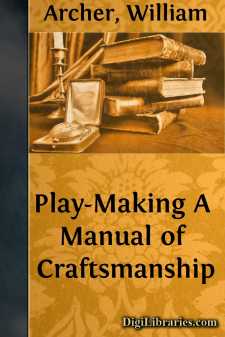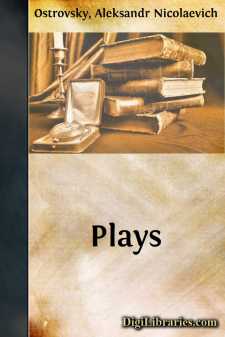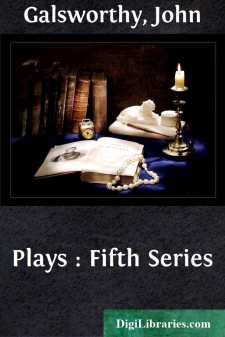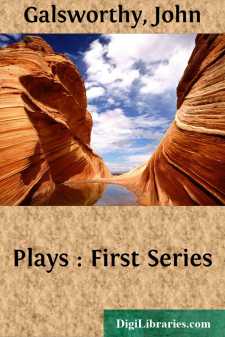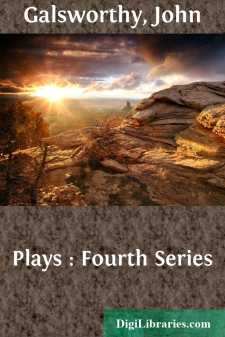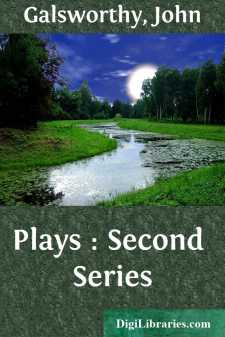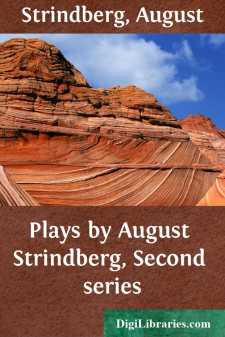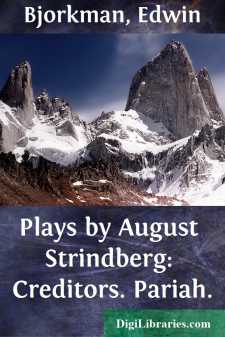Categories
- Antiques & Collectibles 13
- Architecture 36
- Art 48
- Bibles 22
- Biography & Autobiography 813
- Body, Mind & Spirit 142
- Business & Economics 28
- Children's Books 14
- Children's Fiction 11
- Computers 4
- Cooking 94
- Crafts & Hobbies 4
- Drama 346
- Education 46
- Family & Relationships 57
- Fiction 11828
- Games 19
- Gardening 17
- Health & Fitness 34
- History 1377
- House & Home 1
- Humor 147
- Juvenile Fiction 1873
- Juvenile Nonfiction 202
- Language Arts & Disciplines 88
- Law 16
- Literary Collections 686
- Literary Criticism 179
- Mathematics 13
- Medical 41
- Music 40
- Nature 179
- Non-Classifiable 1768
- Performing Arts 7
- Periodicals 1453
- Philosophy 64
- Photography 2
- Poetry 896
- Political Science 203
- Psychology 42
- Reference 154
- Religion 513
- Science 126
- Self-Help 84
- Social Science 81
- Sports & Recreation 34
- Study Aids 3
- Technology & Engineering 59
- Transportation 23
- Travel 463
- True Crime 29
Sort by:
by:
William Archer
CHAPTER I INTRODUCTORY There are no rules for writing a play. It is easy, indeed, to lay down negative recommendations--to instruct the beginner how not to do it. But most of these "don'ts" are rather obvious; and those which are not obvious are apt to be questionable. It is certain, for instance, that if you want your play to be acted, anywhere else than in China, you must not plan it in...
more...
by:
Susan Glaspell
TRIFLES First performed by the Provincetown Players at the Wharf Theatre, Provincetown, Mass., August 8, 1916. GEORGE HENDERSON (County Attorney) HENRY PETERS (Sheriff) LEWIS HALE, A neighboring farmer MRS PETERS MRS HALE SCENE: The kitchen is the now abandoned farmhouse of JOHN WRIGHT, a gloomy kitchen, and left without having been put in order—unwashed pans under the sink, a loaf of bread...
more...
I Part of a densely grown garden; on the right benches; at the back a rail fence, separating the garden from a field. SCENE I Enter NÁDYA and LÍZA NÁDYA. No, LÐÑza, don't say that: what comparison could there be between country and city life! LÍZA. What is there so specially fine about city life? NÁDYA. Well, everything is different there; the people themselves, and even the whole...
more...
by:
John Galsworthy
ACT I SCENE I The study of JOHN BUILDER in the provincial town of Breconridge. A panelled room wherein nothing is ever studied, except perhaps BUILDER'S face in the mirror over the fireplace. It is, however, comfortable, and has large leather chairs and a writing table in the centre, on which is a typewriter, and many papers. At the back is a large window with French outside shutters, overlooking...
more...
by:
John Galsworthy
ACT I SCENE I The curtain rises on the BARTHWICK'S dining-room, large, modern, and well furnished; the window curtains drawn. Electric light is burning. On the large round dining-table is set out a tray with whisky, a syphon, and a silver cigarette-box. It is past midnight. A fumbling is heard outside the door. It is opened suddenly; JACK BARTHWICK seems to fall into the room. He stands holding by...
more...
by:
John Galsworthy
ACT I It is Ascension Day in a village of the West. In the low panelled hall-sittingroom of the BURLACOMBE'S farmhouse on the village green, MICHAEL STRANGWAY, a clerical collar round his throat and a dark Norfolk jacket on his back, is playing the flute before a very large framed photograph of a woman, which is the only picture on the walls. His age is about thirty-five his figure thin and very...
more...
by:
John Galsworthy
ACT I SCENE I The scene is a well-lighted, and large, oak-panelled hall, with an air of being lived in, and a broad, oak staircase. The dining-room, drawing-room, billiard-room, all open into it; and under the staircase a door leads to the servants' quarters. In a huge fireplace a log fire is burning. There are tiger-skins on the floor, horns on the walls; and a writing-table against the wall...
more...
by:
John Galsworthy
ACT I The SCENE is the pretty drawing-room of a flat. There are two doors, one open into the hall, the other shut and curtained. Through a large bay window, the curtains of which are not yet drawn, the towers of Westminster can be seen darkening in a summer sunset; a grand piano stands across one corner. The man-servant PAYNTER, clean-shaven and discreet, is arranging two tables for Bridge. BURNEY, the...
more...
THERE ARE CRIMES AND CRIMES INTRODUCTION Strindberg was fifty years old when he wrote "There Are Crimes and Crimes." In the same year, 1899, he produced three of his finest historical dramas: "The Saga of the Folkungs," "Gustavus Vasa," and "Eric XIV." Just before, he had finished "Advent," which he described as "A Mystery," and which was published...
more...
by:
Edwin Bjorkman
This is one of the three plays which Strindberg placed at the head of his dramatic production during the middle ultra-naturalistic period, the other two being "The Father" and "Miss Julia." It is, in many ways, one of the strongest he ever produced. Its rarely excelled unity of construction, its tremendous dramatic tension, and its wonderful psychological analysis combine to make it a...
more...


